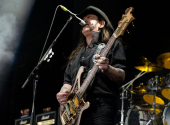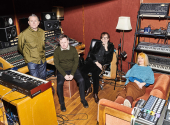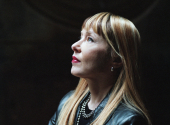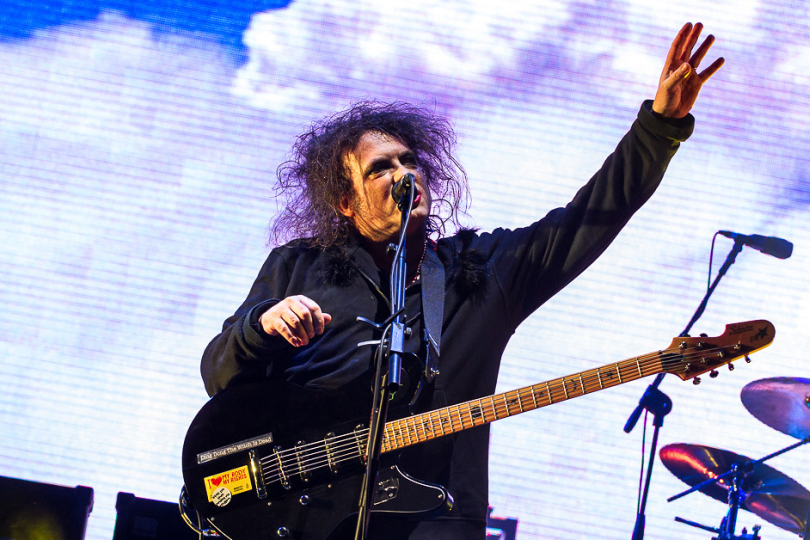
The Cure Return with a Cohesive and Atmospherically Dense Record
"Good things come for those who wait," says the famous proverb. Robert Smith and The Cure have released their fourteenth full-length album, Songs of a Lost World, and received rave reviews. The record is mesmerisingly compelling and cohesive and shows extraordinary songwriting... But why did we have to wait sixteen years for it?
There was still a lot going on around the legendary Goths, it just might not have been apparent at first glance. After the release of 4:13 Dream in 2008, Robert threw himself into a gigantic retrospective. He went through the archived material associated with all the albums up to 1990 and then added the best gems to the bonus deluxe reissues of the individual records. Besides that, his band began to change members again. Guitarist Porl Thompson left, while keyboardist Roger O'Connor and multi-instrumentalist Perry Bamonte eventually returned to the band. Since 2012, guitarist Reeves Gabrels, a long-time collaborator of David Bowie, has formed part of the band.
Subsequently, the band was caught in a wave of jubilees, which forced the timid singer to organise a series of anniversary events. Perhaps the most notable was a gig in Hyde Park in 2018, which the band released a year later on the comprehensive collection of live recordings 40 Live (Curætion-25 + Anniversary) alongside the performance from Meltdown Festival. What's more, the band had been touring as usual until 2018...
It wasn't until 2019, and the subsequent two-year lockdown, that Robert's hands were free to organise the pile of unreleased material he had gathered. It resulted in three stacks representing three potential albums, which the singer began referring to as the band's future albums starting in 2022. The first of these – Songs of a Lost World – is finally out!
The complex process leading up to the album's release is revealed by the singer himself in a lengthy interview lasting over an hour and a half, which The Cure posted to their YouTube profile three weeks ago. He first attempted a new record in 2014. Back then, he talked about a 4:13 Dream sequel, which was to be titled 4:26 Dream. The talk of a new record restarted with the upcoming anniversary. In an interview, Smith admitted that the pomp that comes with anniversaries had prevented him from working on the record at the time. The atmosphere wasn't right for the intense immersion in the process. It was only when the wave of celebrations subsided that the recording sessions took place in 2019 and formed the basis of this year's release. Two-thirds of the material was tested in front of audiences in 2022 and 2023, eventually leading to the completion of the collection, titled Songs of a Lost World.
Most reviews of Songs of a Lost World agree that the essential feature of the album is its cohesive nature. And in the interview mentioned above, Robert Smith confirms that he aimed to emulate what he had previously done with Pornography and Disintegration. That is to say, instead of preparing a heterogeneous mixture of individual songs, like some of The Cure's recent albums, where individual members of the band contributed significantly (even as authors), he made a carefully curated selection from their own demo recordings and thus achieved similar cohesive effect. And he really succeeded.
What can musicians appreciate about the album?
he eight tracks that make up the sextet's album follow a similar mood. Distinctly melancholic, with loneliness and leaving as some of the main themes. Apart from Robert's vocals, the airy keyboard parts play a prominent role, lifting the rock bottom of all the tracks. Songs of a Lost World, like the frontman himself, is in no hurry to get anywhere. And everything is uncompromisingly geared to that. After all, the first single and opening track, "Alone," first unfolds instrumentally for three minutes before the first verses, borrowed from the 19th-century English poet Ernest Dowson's poem "Dregs," arrive.
And that brings us to the only major criticism I have of the album. It simply doesn't contain any solid singles, unlike the two reference albums Pornography ("The Hanging Garden") or Disintegration ("Lullaby or Lovesong"). The record, whose final form was mixed by the proven Paul Corkett who had worked on Bloodflowers, works well as a whole. It won't disappoint a fan of the band, nor will it offend as a backdrop, but it has no ambition to appeal to anyone other than old friends. The fact that there are still more than enough of them is reflected in the increasing number of countries where the album has topped the sales charts. Still, to give the record an exceptional rating, the Songs of a Lost World collection would have to not only move and touch me, but also surprise me in some way. On the other hand, the fact that Robert Smith may not have had the energy or inclination to do so at his age is perfectly legitimate and understandable.
Despite these criticisms, The Cure have managed to present listeners with a strong collection that is (hopefully) a teaser for more material in the pipeline, which Robert Smith plans to release before his 70th birthday and before he puts a definitive end to the whole dark circus that is The Cure.
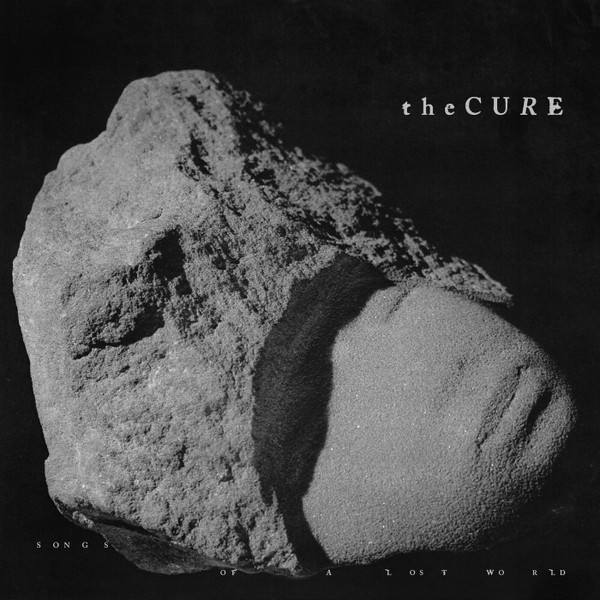
The Cure – Songs of a Lost World
Fiction rec./Universal Music; 49:16, 2024
85 %
If you have found an error or typo in the article, please let us know by e-mail info@insounder.org.


